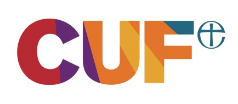No child left behind
Expanding financial education in schools
LifeSavers equips children with essential financial skills and confidence, helping them develop responsible money habits from an early age. In 2024, the reach of LifeSavers expanded, ensuring that more schools, including Special Educational Needs and Disabilities (SEND) and Alternative Provision (AP) settings, could access financial education tailored to their students’ needs.
Enhancing accessibility and inclusion
To better support SEND learners, new interactive, hands-on resources were developed, addressing gaps in traditional financial education. These materials help students engage with money concepts in ways that match their needs, making financial learning inclusive and meaningful.
Schools have responded positively, especially in AP settings, where all surveyed teachers agreed that LifeSavers improved their confidence in delivering financial education. As resource pressures rise and financial stress grows for families, LifeSavers ensures no child is left behind in learning vital money skills.
"I think it’s really important that we recognise what skills children are actually going to need and be able to apply in the future. And obviously, finance is a massive part of that.”
Before LifeSavers, financial education was covered in maths lessons, but methods were outdated and teachers lacked confidence in delivering practical financial learning. “That side of it is almost a bit outdated because it’s about paying with coins and notes, and it doesn’t necessarily happen in that way anymore,” Emma explains. “Children won’t necessarily go to the shop and see parents paying for things with cash, so finance is quite an abstract concept to them because everything is paid for on a card or online.”
To make learning more tangible, the school introduced a break-time tuck shop, allowing children to handle money, make spending choices, receive change and recognise what’s good value.
Since introducing LifeSavers, teachers feel more confident, and financial education has become more practical and engaging. “It’s so valuable as a school to be able to access those resources,” Emma says. “We want to provide our children with high-quality learning opportunities.”




